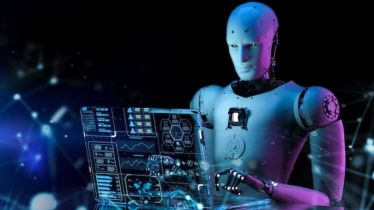By Mrudula Venkatachalam
The elusive spark that gives birth to art, also known as creativity, is often a personal amalgamation of one’s thoughts, desires, memories, or some may even say genetics. Creativity can also be called a process through which an individual works to transform abstract thoughts into tangible innovative forms. When it comes to art, creativity represents itself as the driving force behind masterpieces, groundbreaking inventions, and the countless way in which humans put shape to the world around them.
In an era where technology seems to be changing faster than fashion, artificial intelligence has emerged as a transformative force capable of reshaping various aspects of human endeavor in every other sector. While the question of whether AI can truly replicate or automate the nuances of human creativity remains debatable, it is becoming increasingly evident that this technology has a significant role to play in the artistic realm. However, AI’s relationship with human creativity in art should be considered as one of symbiosis rather than competition.
While we delve into the evolving relationship between human creativity and AI, we definitely see certain areas that hold potential, and their effect on art that’s created.
AI’s Ability to Generate Ideas and Concepts:
Artificial intelligence (AI), despite lacking personal emotions, excels at analyzing vast datasets and uncovering patterns, challenging artistic norms. These unconventional concepts, generated by AI algorithms, by processing extensive information, spark fresh perspectives in artists, broadening their creative horizons. For instance, the introduction of DALL-E, a neural network that generates images from descriptions, raised concerns among artists about its impact on their livelihoods. While it may appear to jeopardize artists’ income prospects, these programs can also fuel designers’ creativity during the project initiation phases. The AI convergence signifies a paradigm shift, enriching the artistic palette and empowering creators to explore uncharted realms of creativity, despite potential challenges to the traditional artistic landscape.
The Efficiency and Cost-Effectiveness of AI-Generated Art:
Traditional artistic creation demands substantial time, effort, and resources. Crafting a single piece, whether a painting, sculpture, or digital artwork, often requires meticulous planning, labor, experimentation, and refinement; not to mention the countless number of failed attempts that come before a completed piece is ready. AI’s efficiency shines here; regenerative AI tools can swiftly produce intricate artworks, revolutionising the art market with cost-effectiveness. For example, an artist preparing a series of complex, large-scale canvases for an exhibition would traditionally invest months. AI, however, enables multiple canvases in a shorter timeframe, empowering artists to embark on ambitious projects and meet deadlines effectively. This newfound efficiency reshapes artistic possibilities and practical solutions.
The Birth of a New Artistic Fusion:
The new artistic fusion of AI and humans in art represents a departure from traditional dichotomies that have long-defined the discipline. Imagine a canvas that blurs the lines between human brushstrokes and AI-generated textures. While a sculpture that marries traditional forms with intricately calculated geometries, or a musical composition that can weave human melodies with digital harmonies, can be a thing of beauty, they may not necessarily be accepted as ‘original’ by purists. On the other hand, the birth of such a fusion could be looked at as, not a dilution of the human element in art but as a testament to the boundless potential that arises when two completely different forces come together to create.
Threat to artistic Individuality
Despite the promises and potentials that the integration of AI brings to the world of art, there are several noteworthy downsides that warrant consideration. One of the most significant concerns pertains to the potential homogenisation and loss of artistic individuality. As AI algorithms analyses vast amounts of existing art and data, there is a risk that artistic creations might become formulaic and predictable, imitating popular styles and trends rather than pushing the boundaries of originality. This could lead to a proliferation of artworks that lack the emotional depth and unique perspectives that are often associated with human-created art.
The copyright conundrum
Like all technological progress, AI’s influence has drawbacks. The copyright quandary related to AI-generated art underscores the intricate interplay between technological advancement and artistic genuineness. AI’s capacity to replicate copyrighted masterpieces blurs homage and duplication, inciting discussions on authenticity. While ongoing debates center on AI’s replication, its true strength lies in its untapped potential, driving creative frontiers and pioneering novel art forms. While proficient, AI art differs from the human creative process that involves conscious choices, life experiences, and unique perspectives.
The unique alliance between AI and human creativity certainly raises profound questions about authenticity, uniqueness, and the very essence of what defines art. As we stand on the threshold of this evolving landscape, the implications are far-reaching, offering both opportunities and dilemmas that warrant careful consideration. The future of art is poised at a crossroads, where the harmonious convergence of human ingenuity and technological prowess may redefine artistic expression in ways that are still unfolding.
The author is technical lead, Manhattan Associates
